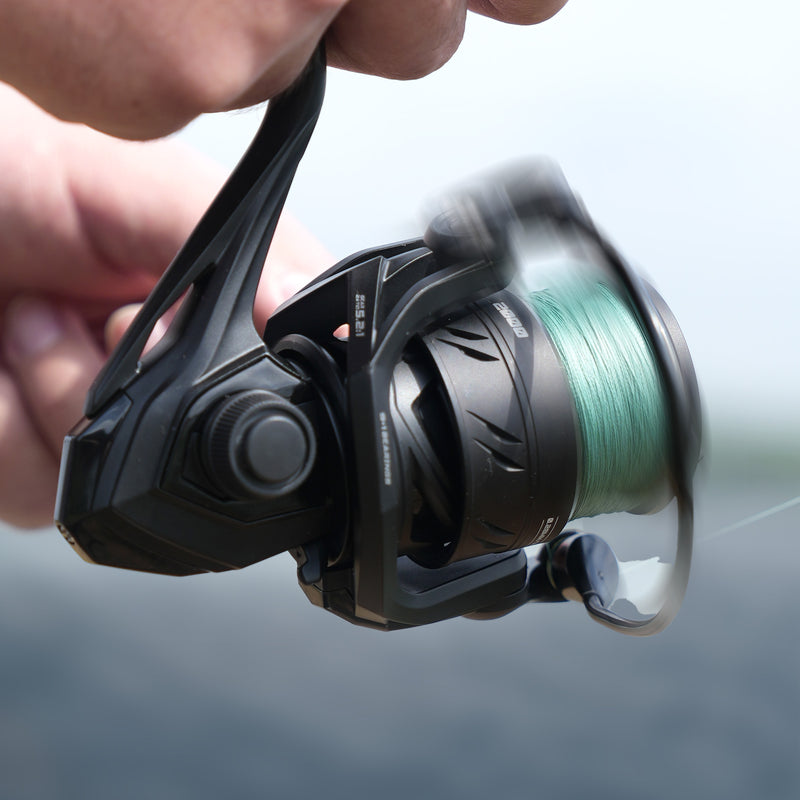Unlock the Secrets to Choosing the Perfect Bass Fishing Reel!
When it comes to bass fishing, having the right equipment can make all the difference between a successful outing and a frustrating day on the water. One of the most critical pieces of gear is the fishing reel. With so many options available, anglers often face the challenge of selecting the perfect reel that suits their fishing style and needs. Whether you're a seasoned pro or a novice angler, understanding the nuances of different fishing reels can enhance your fishing experience significantly. In this article, we’ll dive into the different types of fishing reels, key features to consider, and how to compare performance to find the best fit for your bass fishing adventures.

Understanding Different Types of Fishing Reels
There are three primary types of fishing reels that bass anglers typically consider: baitcasting, spinning, and fly reels. Each type offers unique features suited for varying fishing techniques and environments. Baitcasting reels are often favored for their precision and control, allowing for longer casts and the ability to handle heavier lines. They excel in situations where accuracy is essential, such as when targeting specific spots near cover. Spinning reels, on the other hand, are incredibly versatile and user-friendly, making them a great choice for beginners. They are ideal for lighter lines and lures, enabling quick and easy casting. Lastly, fly reels are specifically designed for fly fishing, which requires a different approach altogether but is equally effective when targeting bass in certain conditions. Each reel type has its advantages, and the choice largely depends on your fishing style and skill level.
Key Features to Consider When Choosing a Bass Fishing Reel
When selecting a fishing reel for bass fishing, there are several essential features to keep in mind. The gear ratio is one of the most significant factors; it determines how fast you can retrieve line. A higher gear ratio allows for quicker line retrieval, which is useful when bass are actively feeding on fast-moving bait. The drag system is another critical feature, as it controls the resistance a fish feels when it pulls on the line. A smooth and reliable drag system is crucial for preventing break-offs during intense fights. Additionally, line capacity is important, as it indicates how much line can be stored on the reel. Depending on the fishing conditions and techniques you plan to use, you may require a reel with a larger line capacity. Finally, consider the weight of the reel; a lightweight reel can reduce fatigue during long fishing trips, allowing you to focus on your technique rather than your equipment.
Comparing Performance: Baitcasting vs. Spinning Reels
When it comes to performance, baitcasting and spinning reels each have their strengths. Baitcasting reels are often preferred by experienced anglers for their ability to handle heavier lines and lures, making them ideal for finesse techniques or fishing in heavy cover. However, they can be challenging for beginners due to the learning curve associated with backlash and casting accuracy. Conversely, spinning reels are generally easier to use for anglers of all skill levels. They excel in lighter tackle applications and can cast lighter lures with ease. However, they may struggle with heavier lines and require more frequent re-spooling. In practice, many anglers keep both types of reels in their arsenal, using baitcasting reels for power applications and spinning reels for finesse fishing. Your choice between these two will largely depend on your fishing style, the specific conditions you're fishing in, and your level of experience.
Price vs. Quality: Finding the Right Balance
The relationship between price and quality in fishing reels can be tricky. While it’s tempting to opt for the cheapest option, investing in a reliable reel designed for bass fishing is crucial. A well-made reel not only enhances your fishing experience but also lasts longer, saving you money in the long run. Look for reels that offer a good balance of features and durability without breaking the bank. It's also wise to read reviews and seek recommendations from fellow anglers. By evaluating the cost-effectiveness of different models, you can find a reel that meets your needs without compromising quality. Remember, spending a little extra upfront can pay off in performance and longevity.
Making the Right Choice for Your Ideal Bass Fishing Reel
Choosing the right fishing reel for bass fishing is an important decision that can greatly influence your overall experience on the water. By understanding the different types of reels available, considering key features, and comparing performance, you can make an informed choice that aligns with your fishing style and preferences. Remember to weigh the balance between price and quality to ensure that you invest in a reliable reel that will serve you well. Take the time to evaluate your specific needs, and you’ll be well on your way to unlocking the secrets of successful bass fishing!








